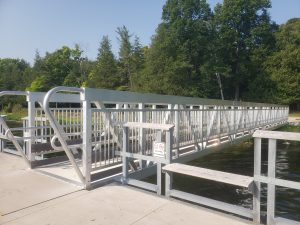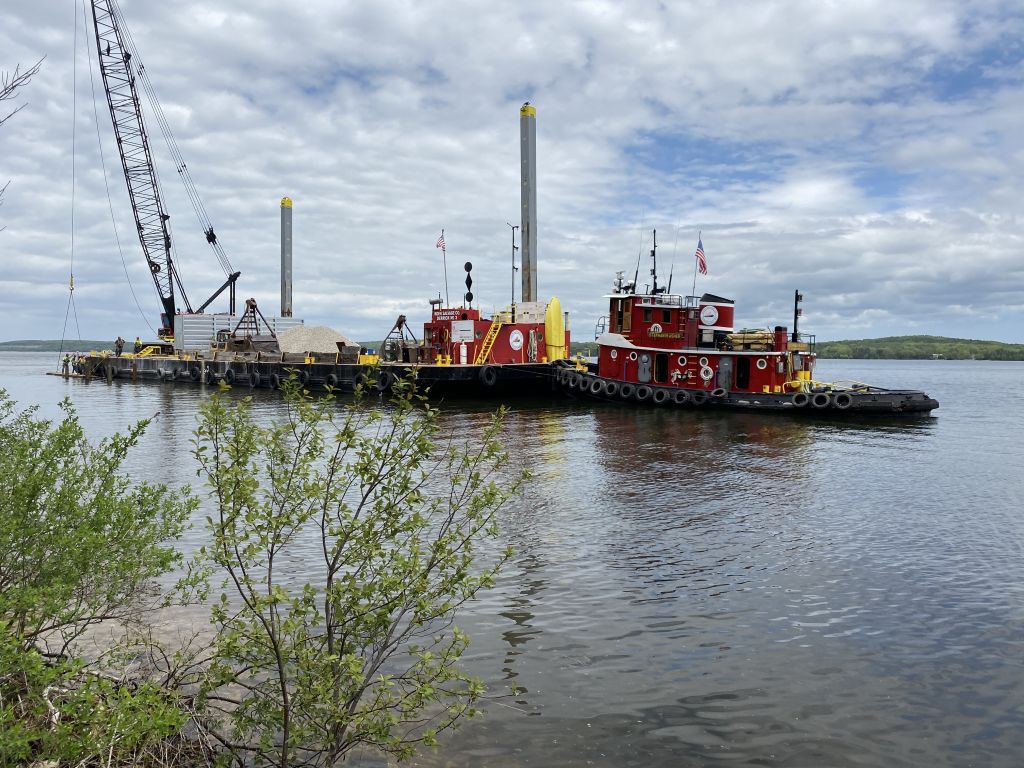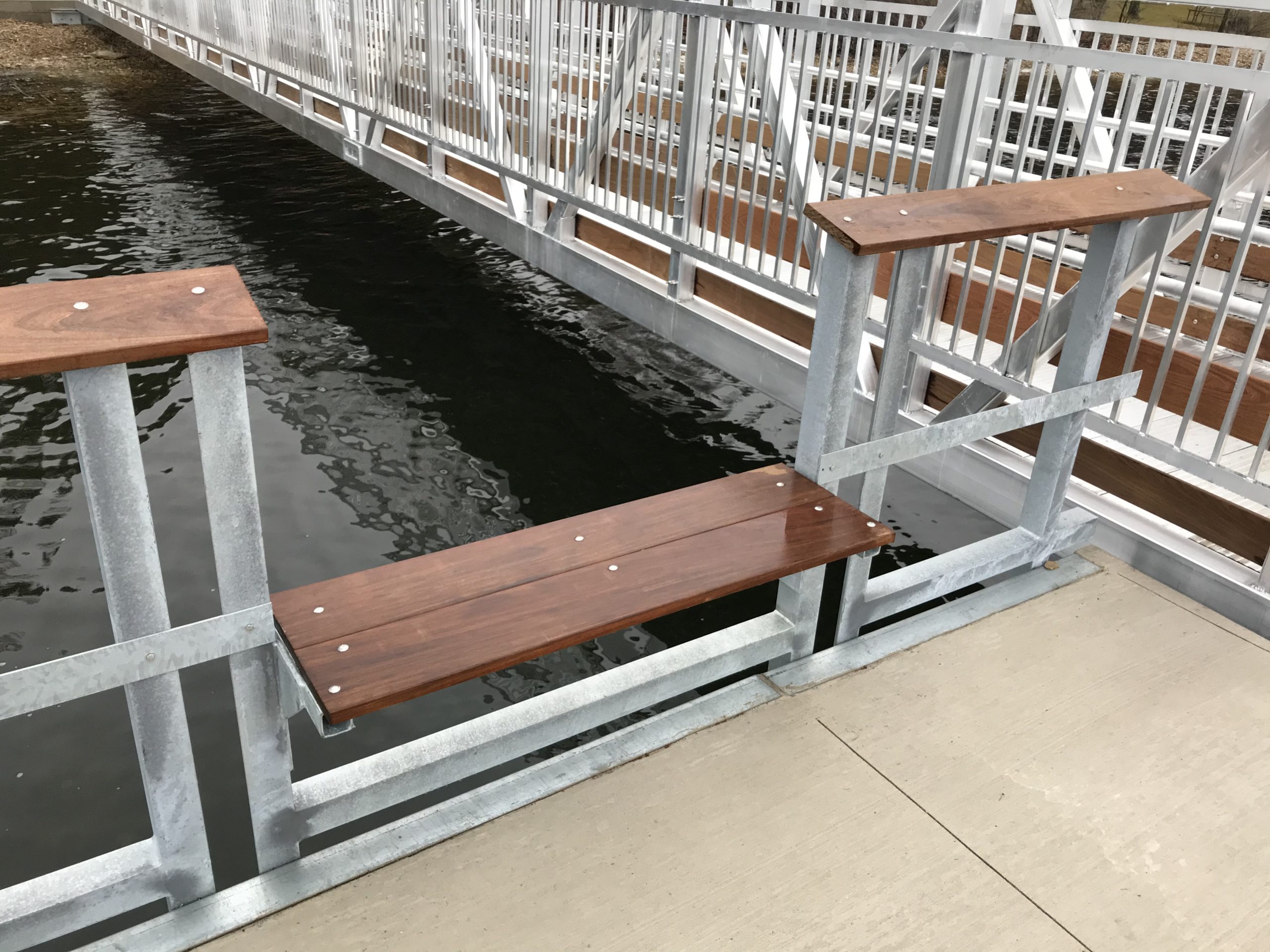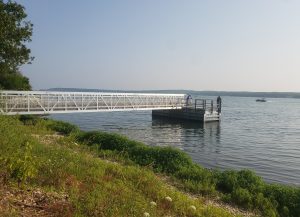Potawatomi State Park is perched on the rocky shore of Sturgeon Bay – gateway to Door County, Wisconsin. While more protected than the larger waters of Green Bay and Lake Michigan proper, Sturgeon Bay is no stranger to strong wind and wave activity, particularly in winter when the bay freezes over and migrating ice loads pose a risk to the coastline.

In 2014, the park’s original ADA-accessible fishing pier was heavily damaged in a storm. The 6-foot-wide floating, removable pier simply could not stand up to the bay’s intense ice and wind loads. Moreover, the DNR and park staff were spending considerable time, maintenance and operations resources to install, remove and repair winter and storm damage – on average more than $10,000 annually. After careful consideration of options and costs, the DNR determined that full replacement of the pier would be the most resilient, sustainable solution.
In 2018, MSA was selected to lead design efforts for the replacement pier in partnership with FreshWater Engineering (now Anchor QEA), who provided a bathymetric survey and study of wind and wave inputs along the park’s southern shoreline. The bathymetric mapping was conducted at 1-foot increments from the shoreline to 150 feet from shore, within a width of 100 feet. The surveys collected baseline data and GPS locates in order to most accurately map the upland and lake bottom project areas. In conjunction, soil borings were extracted from the lake bottom at both the location of the proposed new pier and midpoint between the pier and shoreline in order to locate bedrock and ascertain suitable weight-bearing conditions for the new fixed, all-season structure.
MSA’s design team recognized that a fixed structure would most successfully endure the extreme ice and wind loading experienced at this particular site. As such, the pier would no longer be removed seasonally, saving the DNR and park staff time, money, and maintenance efforts. Designing for fixed structures on any body of water, especially along any of the Great Lakes, requires an understanding of wind, waves, ice and littoral motion, along with consideration of fluctuating water levels from year to year, with design to accommodate both highs and lows. Ultimately, the team decided on a bin-wall retaining wall structure, an 11-foot by 20-foot system of adjoining closed-faced bins made of galvanized steel and filled with rocks. The bin wall is a galvanized steel box that is formed using a zee-shaped profile, providing added structural resilience and the ability to deflect ice loads in winter. It is complete with concrete decking and a robust aluminum railing, connected to the shore by an 80-foot aluminum gangway. Large, specialized ice shields were also designed for the northern and western sides of the structure — galvanized steel plates affixed to the sidewall of the pier and descending below the water line to serve as an extra line of defense against inclement weather.

A barge is employed to haul materials to the pier construction site.
The entire structure is designed for full and accessible use, compliant with ADA standards. It includes sections with lowered railings, seating, and arm rest areas for those in wheelchairs or other mobility-assist devices to easily sit and fish or rest. Fishing is popular in Potawatomi State Park, after all, a great destination to seek bass, whitefish, rainbow trout and walleye.

A new ADA-accessible path connects visitors to a nearby shelter, picnic and parking areas, multiuse trail and hiking trail — as well as to the Ice Age National Scenic Trail, a 1,200-mile-long trail system whose eastern terminus and trailhead lies at the other end of the park.
For Potawatomi State Park, full and equitable access to all park and recreational amenities has always been top of mind. Replacing the fishing pier and selecting a design to withstand the most extreme of Great Lakes weather patterns in any season fortifies the park’s reputation of excellence and sets it up for long-term resiliency and success. The new pier was funded, in part, through generous donations collected by the Friends of Potawatomi State Park in collaboration with the Door County Community Foundation and celebrated with an official dedication ceremony on June 5, 2021.

